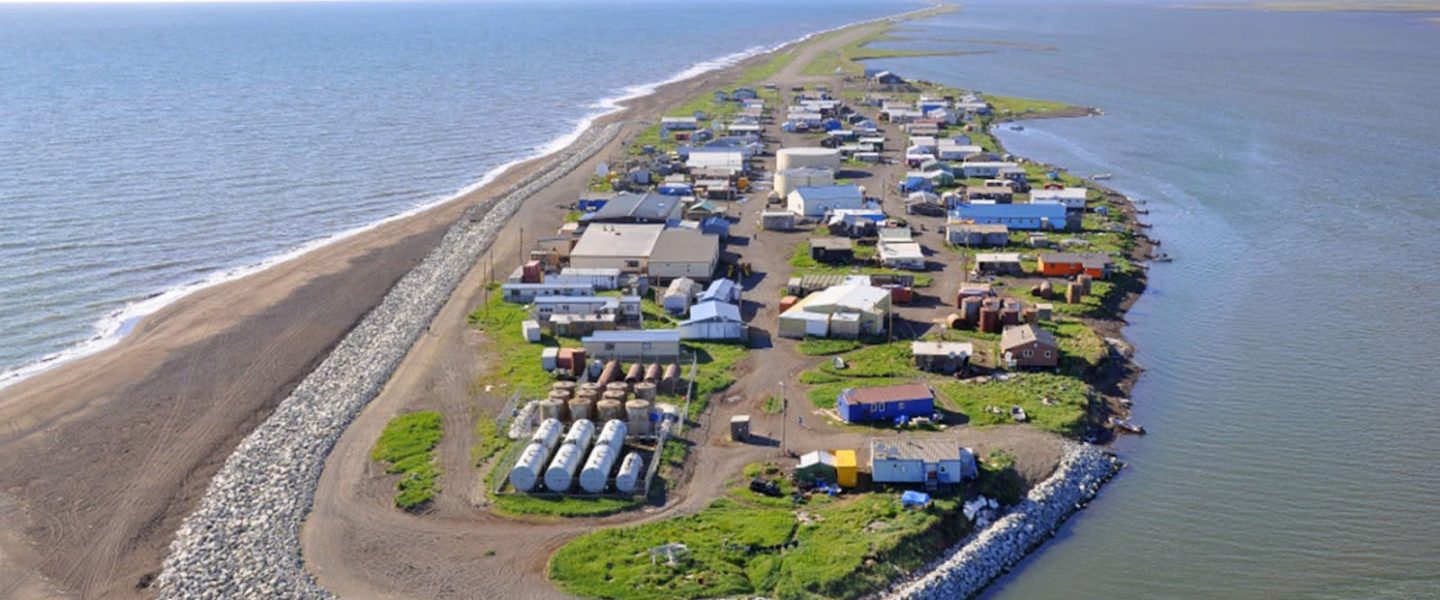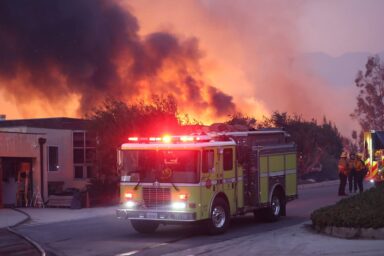A new US climate report concludes that Indigenous self-determination is a key climate solution — if the federal government can get behind it.
|
Listen To This Story
|
For the last 20 years, Walter Ritte has been working to restore a massive, human-made lagoon along the south shore of the island of Molokai. Before Hawaii became a state, before the United States overthrew the Hawaiian Kingdom, this 55-acre pond was a fish farm — one of an estimated 450 brackish, coastal coves that fed an estimated 1 million people. Ritte is among a group of Native Hawaiians who have been working to bring the Molokai fishpond back to life.
“Our future is our history, and we’ve gone away from that,” he said. “If we’re not self-sufficient, we are gambling with our lives here.”
Ritte has rebuilt broken undersea walls and gates, removed predatory fish and invasive plants from the lagoon, reintroduced species that once thrived in the area, and monitored water quality. The goal, says Ritte, is to revive Indigenous aquaculture and reverse Hawaii’s dependence on imported food, which makes up nearly 85 percent of all food on the islands.
But worsening rainstorms have raised worries. When the rain comes, it barrels down, transforming red dirt into mud that slides down the hillside into the sea, suffocating reefs and filling the fishponds Ritte has been trying to revive with sludge. As the impacts of climate change intensify, Ritte knows the challenge to revive, and preserve, Hawaii’s aquaculture traditions will get harder.
“One of the big reasons why Molokai was known as ʻāina momona, which means the ‘fat land,’ is because we had so much protein coming off the reefs,” he said. “All of this is in jeopardy because of a hundred years of excess erosion.”
Indigenous peoples, like Ritte, bear both the weight of climate change’s impacts and carry knowledge that may help lessen its burden. That’s according to the latest National Climate Assessment, a federal, interagency report published by the US Global Change Research Program every five years. The report’s authors emphasized that American land theft and colonization have made Indigenous peoples more vulnerable to climate change as shrinking coastlines and more frequent extreme weather events threaten historic sites, cultural practices, and food supplies.
“Historical abuses of Indigenous rights have significant responsibility for the heightened severity of climate disruption,” the report concluded.
The report cites a 2021 study that concluded that Indigenous peoples in the United States lost 99 percent of their territories through colonization, and that the lands that they were forced to move to face higher wildfire risk and worse drought than their traditional homelands. According to the authors, Indigenous peoples across the continental US and its island holdings hail from more than 700 tribes and communities, and while each community has a different relationship with the federal government, all share similar experiences of colonization through stolen land, cultural assimilation, and persistent marginalization.
For example, the study noted that, on average, relocated Indigenous people endure two extra days of extreme heat. Nearly half saw an increased wildfire risk. More than a third of tribes studied are experiencing more frequent drought than they would if they were still living in their historical homelands.
More flooding is another challenge. According to the report, 70 out of 200 Alaska Native villages are at risk of “severe impacts” from flooding, erosion, and permafrost melt, according to one 2022 federal report. The problem prompted the Biden administration to launch a new federal program, last year, to pay tribes to move away from rivers and coastlines threatened by flooding and other climate change effects.
The report also detailed problems with the National Flood Insurance Program, a federal insurance program managed by the Federal Emergency Management Agency that helps homeowners insure against the risk of flooding, something that many insurance companies won’t cover. The program is supposed to help communities mitigate flood risk, but the report found that its implementation in Native communities has been flawed and ineffective: The program is mandatory for homeowners who live in flood-risk areas — even if they are Indigenous people who were forcibly moved to a danger zone — and premiums are costly. Tribes end up spending lots of money on floodplain managers and must shoulder the cost of creating and enforcing floodplain management ordinances, the report said.
“The [National Flood Insurance Program’s] inability to support a diversity of Indigenous jurisdictions and effectively communicate program information inhibits Indigenous peoples’ success as program operators and beneficiaries,” the authors concluded.
Many Indigenous communities also lack data on their flood risk, a problem that reflects broader climate-related data gaps for Native peoples that the report repeatedly noted. Despite the input of hundreds of expert collaborators, the report noted the absence of data on Indigenous peoples, including missing maps of historical ancestral homelands in American Samoa, missing data on wildfire risks to the US’s island territories, and a broad lack of environmental data from Indian Country. The absence of data, the authors noted, represents a major systemic obstacle that impedes policymaking.
Similarly, the report found that local, state, and federal governments often don’t do enough to involve Indigenous peoples in climate change response planning. Native communities that pursue such planning themselves are often hampered by lack of funding and staffing. Even when money is available to fund Indigenous-led projects, the money streams may not actually be constructed in a way to be actually accessible. Renewable energy projects, such as a wind farm pursued by the Rosebud Sioux Nation, for example, have faced many challenges, including inadequate funding, questions about ownership of infrastructure, and bureaucratic hoops.
The report concludes that supporting Indigenous self-determination is necessary to ensure Native communities’ needs are met, but also found that those efforts are undermined by policies and institutions that uphold state, local, or federal policies or prioritize the needs of the private sector.
“The right to self-determination means Indigenous peoples should be in the position to make decisions about how to respond to climate change in ways that meet community-defined needs and aspirations,” the report says.
Nationally, Native people lead more than 1,000 efforts to address climate change, drawing up hundreds of climate change adaptation and mitigation plans. In Washington state, the Swinomish Indian Tribal Community cultivates clam gardens to fight ocean acidification; in California, the Karuk Tribe has fought for their right to conduct prescribed burns.
Walter Ritte says the hot, humid summers are lasting far longer than when the 78-year-old Native Hawaiian activist was a boy on Molokai, and the rainstorms are more erratic, and fierce. Still, he is confident that better land management practices can help restore the fishponds, supporting more nearshore fishing, despite the climate threat.
“The water is getting warmer and killing the reef, but it’s also the erosion coming from the land, and that we have the ability to mitigate,” he said. “I don’t know how to mitigate the temperature of the ocean, but I know how to mitigate the land, because that’s where I’ve lived and our ancestors did it. So that’s what we hope we’re going to do, what we know we can handle.”
This story by Anita Hofschneider was originally published by Grist and is part of Covering Climate Now, a global journalism collaboration strengthening coverage of the climate story.





